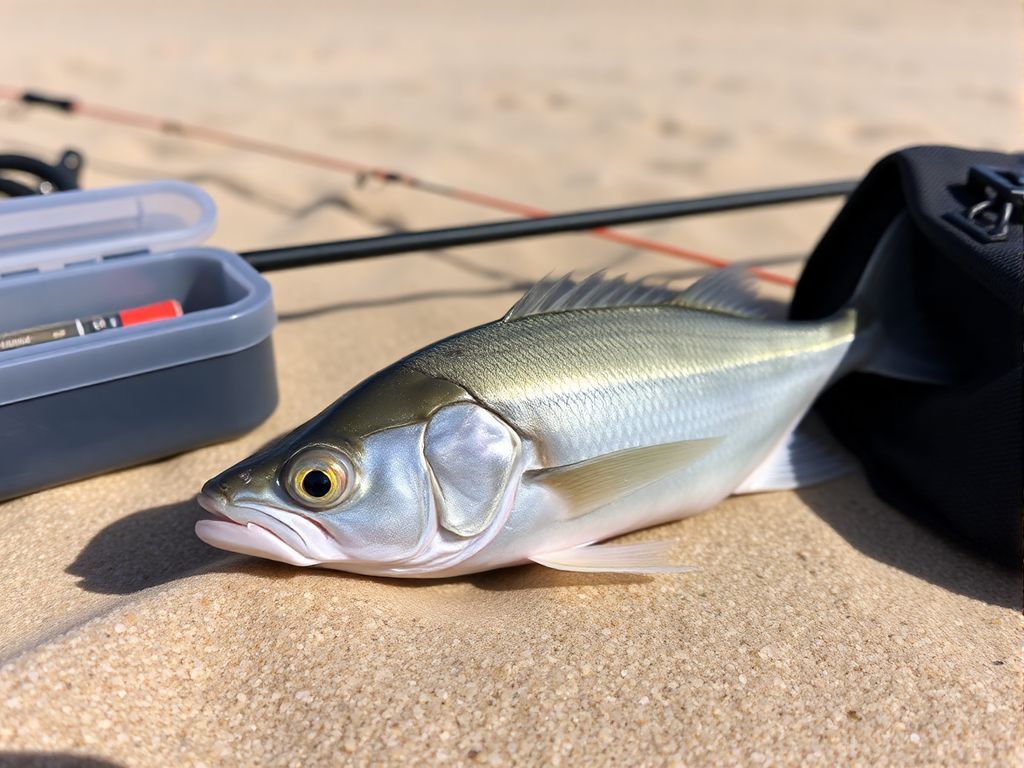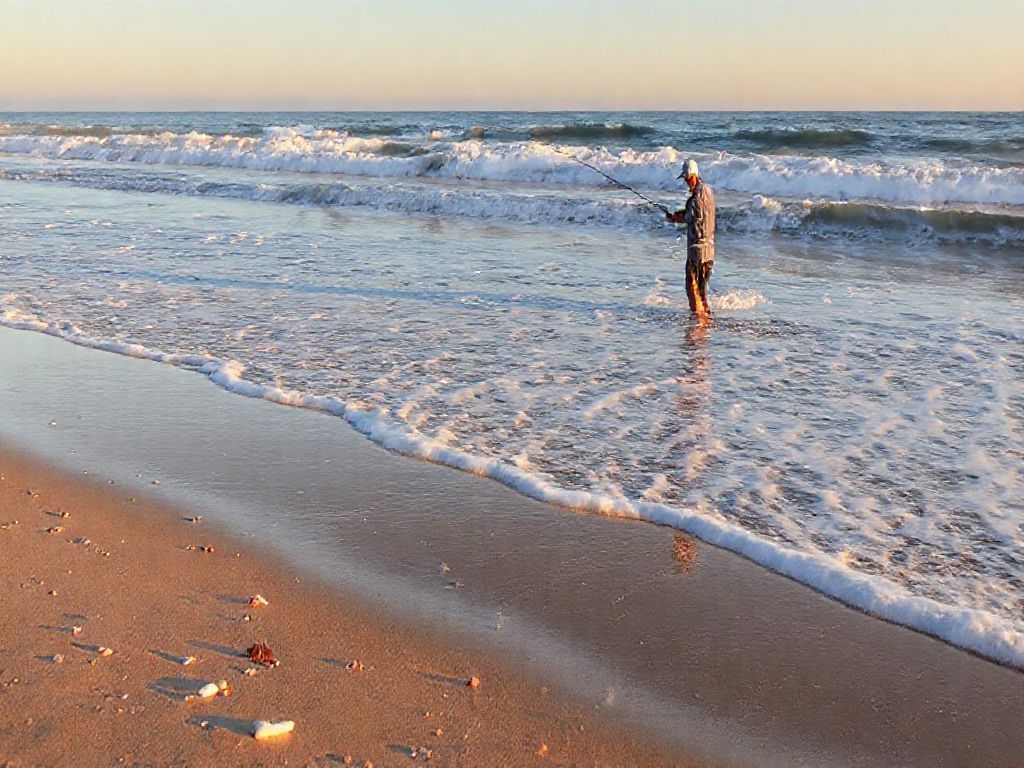Part 2: A Closer Look at Corbina Fishing in California
California corbina (Menticirrhus undulatus) are highly prized by surf anglers for their elusiveness and fight. While Part 1 covered the legal size limit (or lack thereof), daily bag limits, and basic guidelines, Part 2 dives deeper into the nuances of corbina fishing, sustainable practices, and the reasons behind the regulatory framework.
Corbina Fishing: A Historical Perspective
To fully appreciate California corbina, it’s important to understand their significance in recreational fishing and the historical measures taken to protect them.
A Century of Conservation:
- 1909: The use of commercial fishing nets to catch corbina was banned. This was one of the first steps toward recognizing their value as a recreational species.
- 1915: A law prohibiting the sale and purchase of corbina was enacted. This ensured that these fish remained a non-commercial resource, preventing overharvesting and maintaining balance in their habitats.
Why Corbina Matter:
Corbina are native to California and primarily inhabit surf zones, where they play a critical role in the marine food web. Their diet of sand crabs and small crustaceans makes them vital in maintaining ecological equilibrium in these areas.
Understanding Corbina Behavior
Habitat and Distribution:
Corbina are most commonly found in the surf zones of Southern California beaches. They prefer shallow, sandy areas where they forage for food. The best locations include:
- Orange County: Huntington Beach and Newport Beach are popular spots.
- San Diego: Mission Beach and Coronado Beach.
- Los Angeles County: Santa Monica and Malibu beaches.
Feeding Habits:
Corbina primarily feed on:
- Sand crabs
- Small clams
- Marine worms
- Mussels
Their diet directly influences the choice of bait used by anglers. Using natural, live bait that mimics their diet can significantly increase your chances of success.
Techniques for Targeting Corbina
Catching corbina requires finesse and knowledge. These fish are known for their picky bites and often test the bait before committing, making patience and skill crucial.
Gear Recommendations:
- Rods and Reels:
- A lightweight rod (6-8 feet) with a sensitive tip to detect subtle bites.
- A spinning reel with a smooth drag system for handling corbina’s strong runs.
- Line:
- Use 6-10 lb test monofilament or fluorocarbon for stealth, as corbina have excellent eyesight.
Bait and Rigs:
- Best Bait: Live sand crabs are the top choice, followed by ghost shrimp and bloodworms.
- Rigging: The Carolina rig is highly effective for corbina fishing. Pair it with a small, sharp hook to ensure a secure catch.
When to Fish:
- Fish during the incoming or high tide, as corbina are more active when the water is moving.
- Early morning and late afternoon are typically the best times for surf fishing.
Sustainable Fishing Practices
While there is no size limit for corbina, adopting sustainable fishing practices is essential to preserve this species for future generations.
Best Practices:
- Catch and Release:
- Consider releasing smaller corbina (under 12 inches), allowing them to mature and reproduce.
- Use barbless hooks to reduce injury when practicing catch and release.
- Limit Your Catch:
- Even if the daily bag limit allows 10 fish, take only what you need. This approach helps conserve the population.
- Respect the Environment:
- Avoid leaving trash or fishing line on the beach.
- Be mindful of disturbing natural habitats, such as sand crab colonies.
The Role of Recreational Anglers in Conservation
Recreational anglers are at the forefront of corbina conservation efforts. By adhering to regulations and promoting ethical fishing, they contribute significantly to maintaining healthy fish populations.
Advocacy for Marine Life:
- Organizations like the California Department of Fish and Wildlife (CDFW) and local fishing clubs often encourage sustainable practices through workshops and community programs.
- Joining such initiatives not only enhances your fishing knowledge but also helps protect the marine environment.
Reporting Violations:
- If you observe illegal fishing practices, such as exceeding bag limits or using prohibited equipment, report them to the CDFW’s CalTIP hotline. Your efforts can make a difference in protecting California’s natural resources.
Common Misconceptions About Corbina Fishing
Many anglers have misconceptions about corbina regulations and behavior. Let’s clarify a few:
1. Is there a size limit for corbina?
- No, there is no minimum or maximum size limit for California corbina.
2. Are corbina difficult to catch?
- While corbina are known for their subtle bites, understanding their behavior and using the right gear can improve your chances.
3. Do corbina only bite on live bait?
- While live bait is highly effective, corbina can also be caught using artificial lures that mimic their natural prey.
Why Fish for Corbina?
Fishing for corbina offers more than just the thrill of the catch. It’s an opportunity to connect with nature, improve your fishing skills, and enjoy the tranquility of California’s beautiful beaches.
Benefits of Corbina Fishing:
- Skill Development: Corbina fishing challenges anglers to master subtle techniques and develop patience.
- Community: Surf fishing is a shared passion among many California residents, fostering a sense of camaraderie.
- Culinary Delight: Corbina have firm, white meat that’s excellent for grilling or frying, making them a prized catch for seafood lovers.
FAQs (Expanded)
11. What is the best season for corbina fishing?
- Corbina can be caught year-round, but the summer months are particularly productive when sand crabs are abundant.
12. Are corbina part of the croaker family?
- Yes, corbina belong to the croaker family and are closely related to species like spotfin croaker.
13. Can I use artificial lures for corbina?
- Yes, soft plastics that resemble sand crabs or shrimp can work, although live bait is more effective.
14. What should I do if I catch a corbina with eggs?
- Release it immediately to support the species’ reproduction and future populations.
15. What’s the largest corbina ever caught?
- The California state record for corbina is a 7 lb 1 oz fish caught in 2003.
16. Do corbina migrate?
- Corbina do not migrate long distances but tend to stay within specific surf zones year-round.
17. What is the average size of a corbina?
- Most corbina measure between 12-22 inches, with larger specimens reaching up to 30 inches.
18. How can I handle corbina safely?
- Wet your hands before handling to protect the fish’s slime coating and avoid injury.
19. Are corbina aggressive feeders?
- No, corbina are cautious feeders. They often nibble bait before fully biting.
20. Why are corbina called “ghost fish”?
- Corbina are nicknamed “ghost fish” because they are difficult to spot in the surf zone due to their silvery, translucent appearance.


